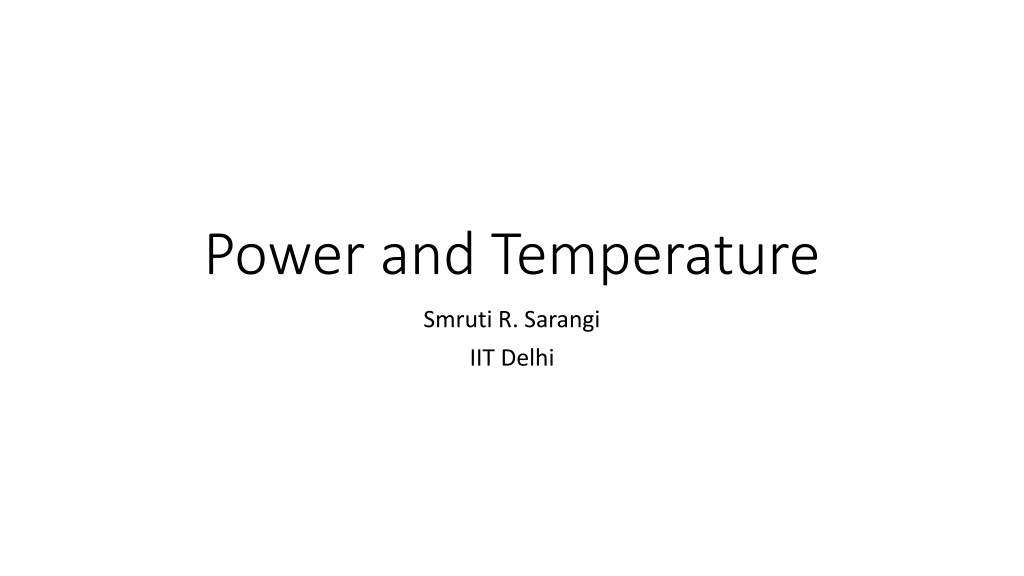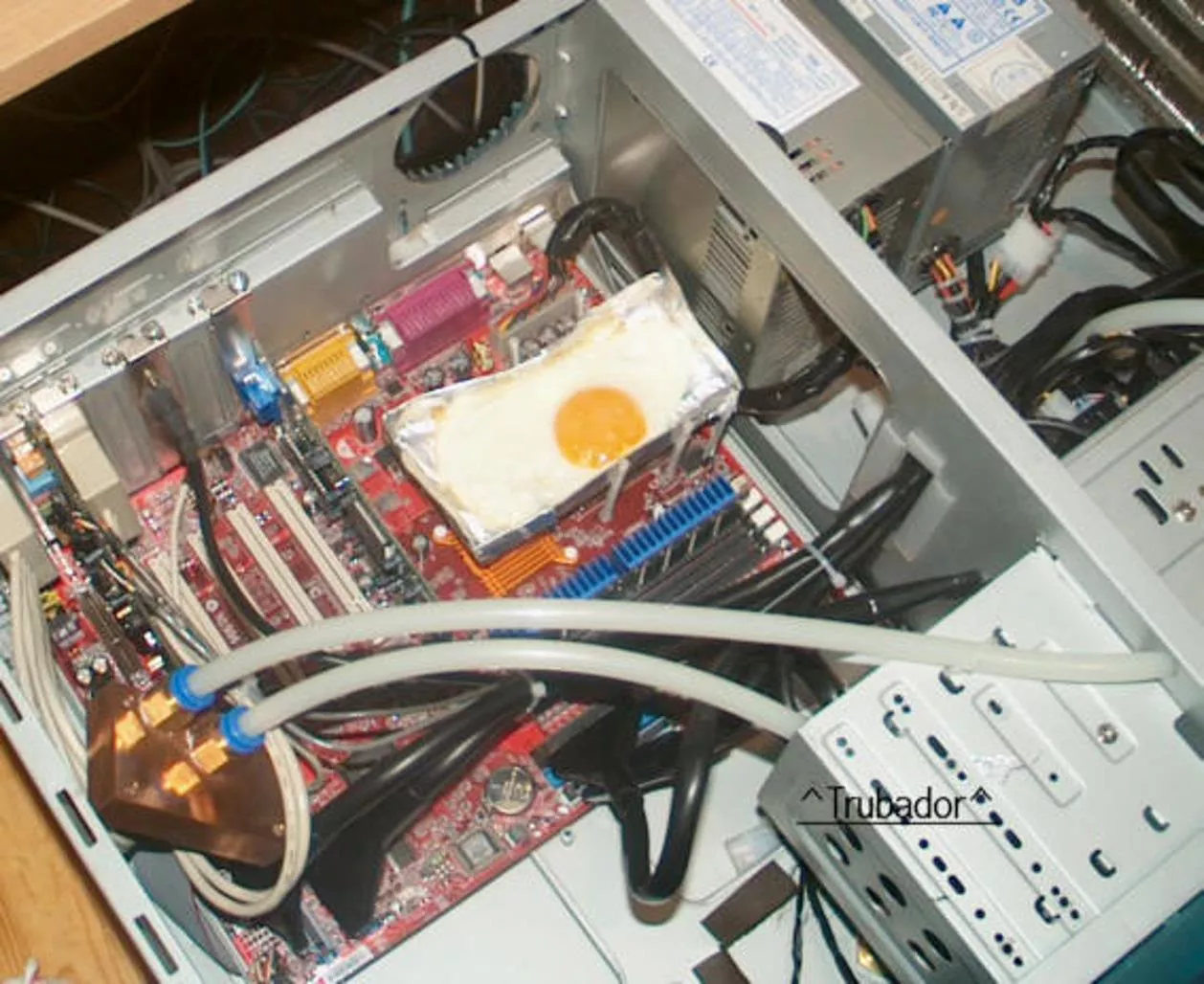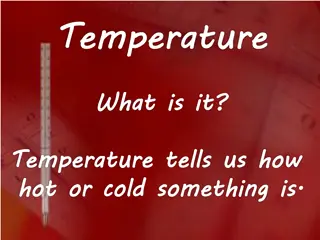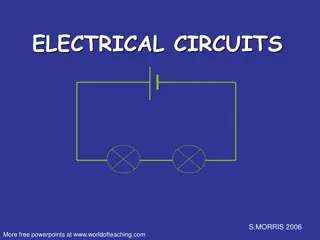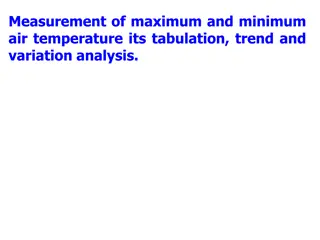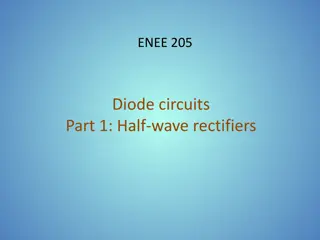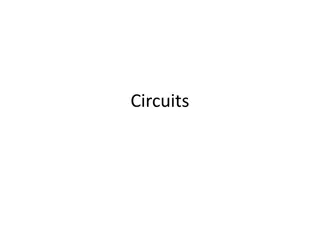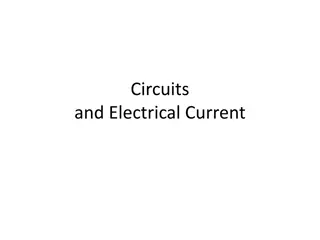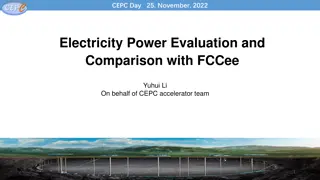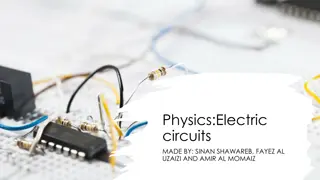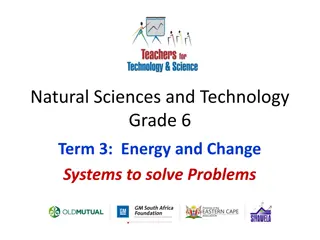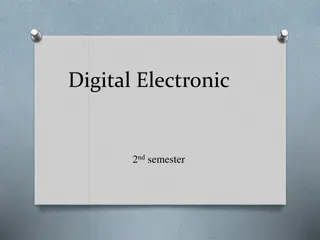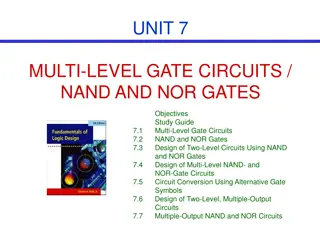Power Consumption and Temperature in Electronic Circuits
Explore the significance of power consumption in electronic circuits, focusing on reasons for high power, high temperature, and low reliability. Learn about sources of power consumption, types of power dissipation, dynamic power analysis, and the relationship between energy and power in circuits.
Download Presentation

Please find below an Image/Link to download the presentation.
The content on the website is provided AS IS for your information and personal use only. It may not be sold, licensed, or shared on other websites without obtaining consent from the author. Download presentation by click this link. If you encounter any issues during the download, it is possible that the publisher has removed the file from their server.
E N D
Presentation Transcript
Power and Temperature Smruti R. Sarangi IIT Delhi
Scientific Reasons High Power High Temperature Low Reliability
Types of Power Dissipation Dynamic power Power lost due to current flowing across resistors in the chip s circuit Leakage power Power that is lost in transistors when they are in the off state Short circuit power Power lost when both the PMOS and NMOS transistors are on (during a logic transition)
Dynamic Power Any electronic circuit can be decomposed (at any point in time), to an equivalent circuit with resistances, capacitances, current and voltage sources Equivalent Circuit of an NMOS transistor ?? ??? drain gate + ??? ??? ??? ????? ?????? - source - ??? ??? ??? + body
Consider a simple case Discharging Charging R R C C V While charging Energy dissipated in the resistance: 1 Energy stored in the capacitor: 1 While discharging Energy dissipated by the resistance: 1 2??2 Total energy dissipated in one charge-discharge cycle: ??2 2??2 2??2
Dynamic Power Analysis What do we know up till now: For a simple circuit with a R and a C, the dynamic energy dissipation for a single charge-discharge cycle is: CV2 What about for a larger circuit: Let us assume that in a given charge-discharge cycle: units 1 ... n are active Energy dissipated: ( ?=1 ??)?2 = ?????2 In general for a unit, if a fraction (in terms of energy) is active at a given point of time, we can say that the energy dissipated is: ?????2 ?
Energy vs Power Power = Energy per unit time For a given clock cycle ?????? ????? ????= ?????? ????????? ???2? P = Let C refer to a lumped capacitance ? is the activity factor (varies from 0 to 1) V is the supply voltage f is the frequency
Are V and f related? Let us look at some textbook results. Alpha Power Law (? ?? )? ? ? For older processes (late nineties) (V >> Vth) and ( = 2) Thus, we could say: ? ?, this will make P ?3 Olden Days V is 2-3 times Vth , and is between 1.1 and 1.3 Thus, this statement would be more correct: P ?6 Nowadays
Voltage-Frequency Scaling What happens if we increase the voltage We can also increase the frequency The power will also increase significantly We already know the relation between V and f Quad-core AMD Opteron scaling levels: Voltage Frequency 1.25 V 2.6 GHz 1.15 V 1.9 GHz 1.05 V 1.4 GHz 0.9 V 0.8 GHz
Leakage Power: Sources of Leakage Current gate source drain n n 1. subthreshold current 2. Drain induced barrier lowering 3. Gate oxide tunneling 4. GIDL bulk
Leakage Power: Sources of Leakage Current gate 6. hot carrier injection source drain n n 5. p-n junction current bulk
Description of the Mechanisms Sub-threshold leakage When a transistor is turned off, there should be no current flowing between the source and drain This is the ideal case, and life is never ideal Little bit of leakage is there even in the off state input output small amount of current flow even if the transistor is off
DIBL and Gate Tunneling DIBL (drain induced barrier lower) As the drain voltage increases, the threshold voltage decreases (Vth) Lower the Vth, more is the leakage The current flows between the drain-to-source terminals Thin-oxide Gate Tuneling The gate oxide is very thin (<2 nm) Since the oxide layer is so thin, current tunnels from the gate to the body of the transistor NMOS leakage is much more than PMOS leakage (3-10X more)
Other Mechanisms Gate-Induced Drain Leakage (GIDL) Current flows from the drain terminal into the body of the transistor Can happen when the gate voltage is high (in NMOS) A high gate voltage increases the charge concentration in the areas near the gate. P-N Junction Leakage Current flowing between the source-and-body and drain-and-body Hot Carrier Injection Hot carriers are fast electrons that get trapped in the gate oxide This causes a shift in the threshold voltage, Vth Affects leakage current
Some Equations Most commonly used equation for leakage current (mainly sub- threshold leakage) vT kT/q (k Boltzmann s constant, q Coulomb s constant, T Temperature) Vth has a temperature dependence Typically reduces by 2.5 mV for every degree C rise in temperature Conclusion: Leakage power is superlinearly dependent on temperature
Consider a CMOS Inverter T2 T1 When the input is 0: T1 is off, and T1 is on When the input is 1: T1 is on, and T2 is off During the transition: For a brief period, both are on
Ballpark Figures Dynamic Power 40-60% Short Circuit Power 5-10 % Leakage Power 20-40 %
Power and Temperature Methods of heat transfer Conduction Heat transferred between two objects when they are in contact Convection Heat transferred between an object and a flowing fluid Radiation (Not relevant) Rate of change of temperature (u) is proportional to the second derivative of temperature over space
Chips Package Fan Thermal interface material Heat sink Heat spreader Silicon die PCB The spreader helps to avoid temperature hot spots The fan blows air over the heat sink
Some Maths T= AP Let us divide the surface of the die into a M * M grid Let N = M2 Let the vector P be a N*1 vector. P[i] is the power dissipated at the ith grid point Similarly, let T be a N*1 vector for temperature Let A be a N*N matrix that linearly relates power and temperature As simple as that ....
Leakage Temperature Feedback Loop Needs several iterations to converge Dynamic + Short Circuit Power Total Power Temperature Leakage Power
